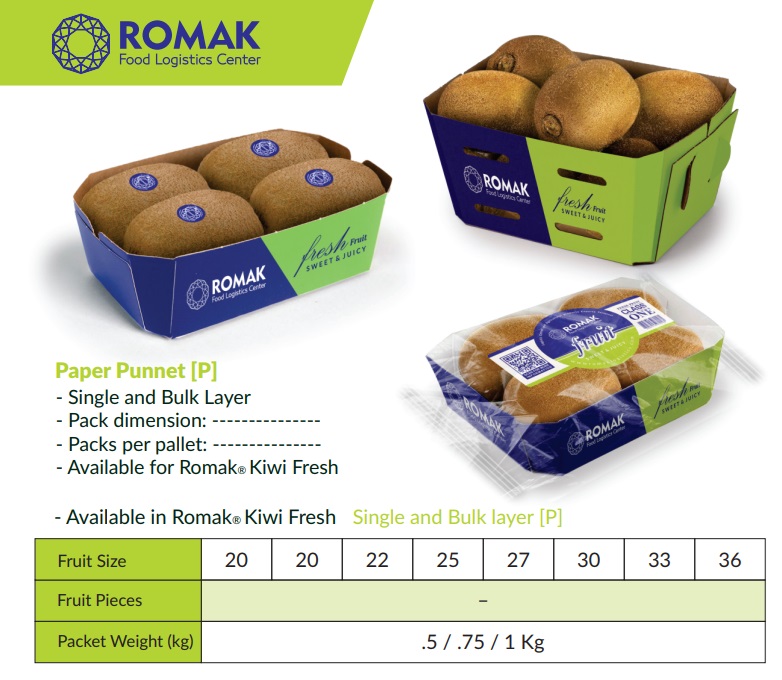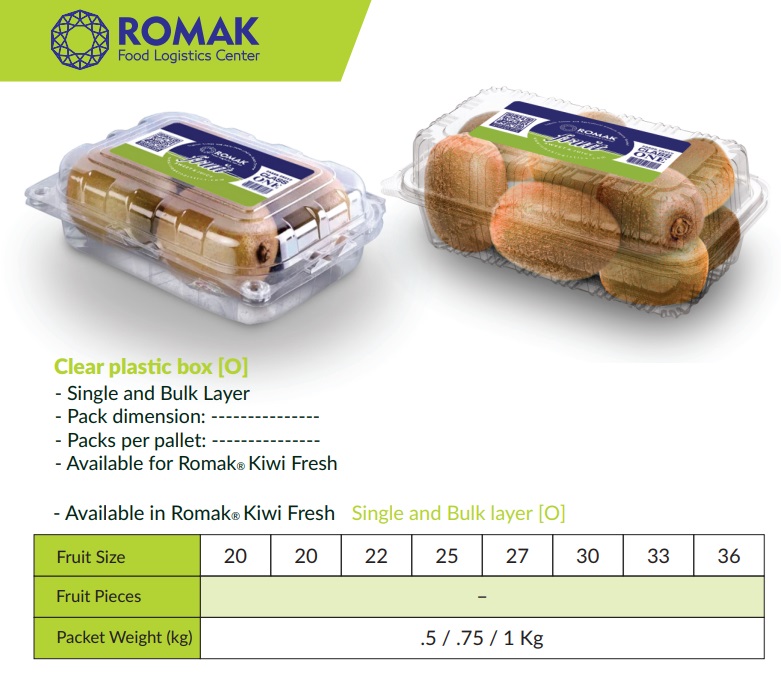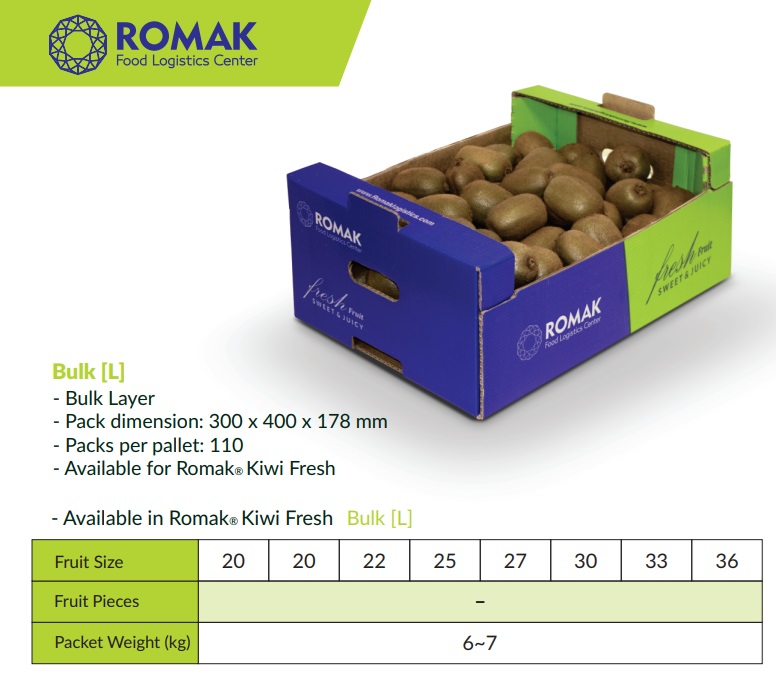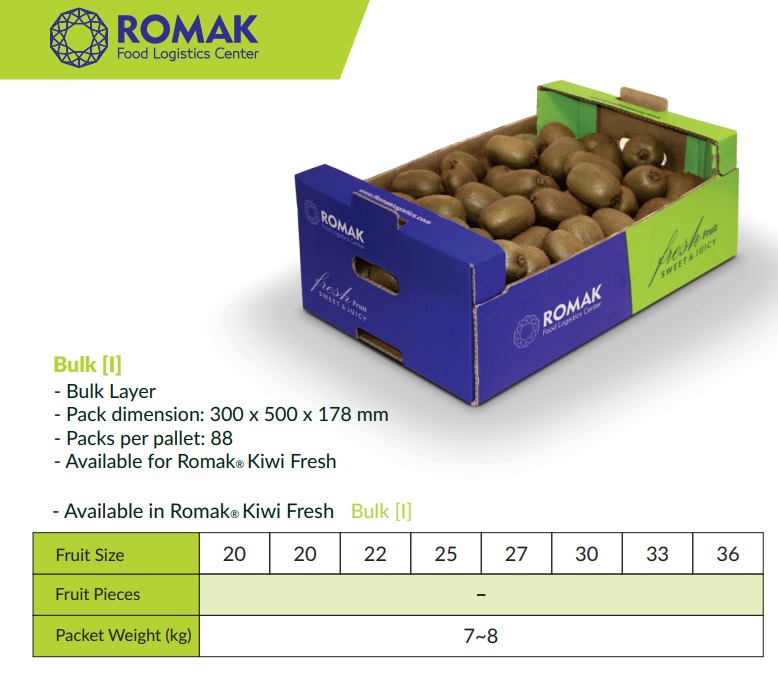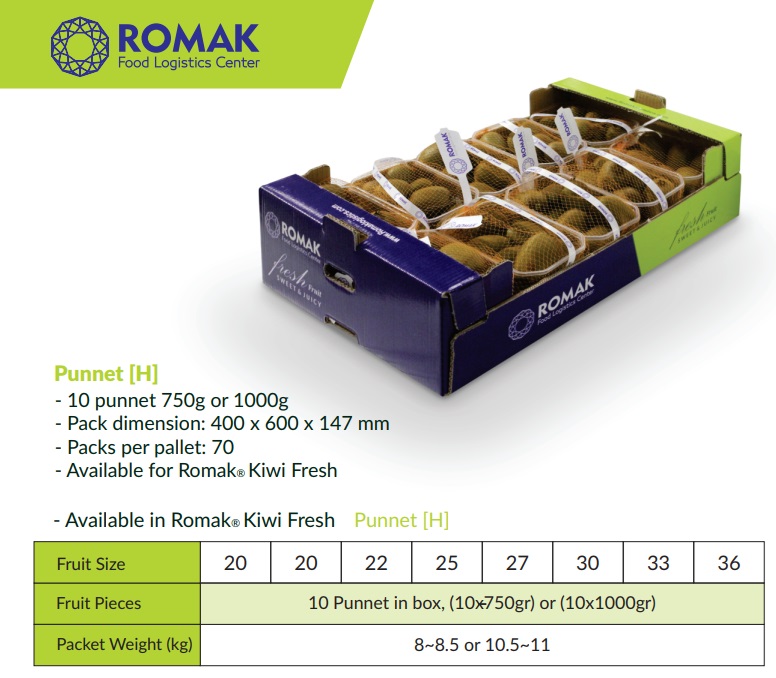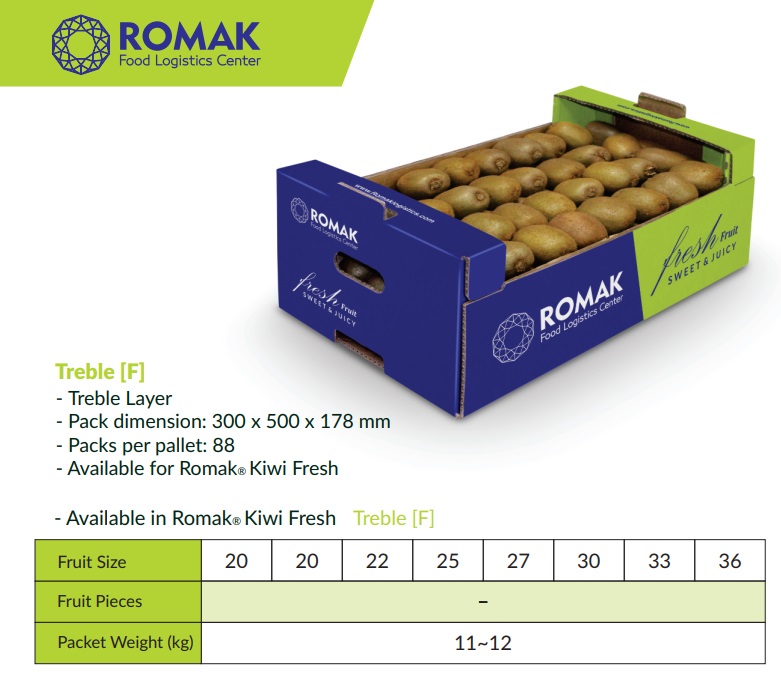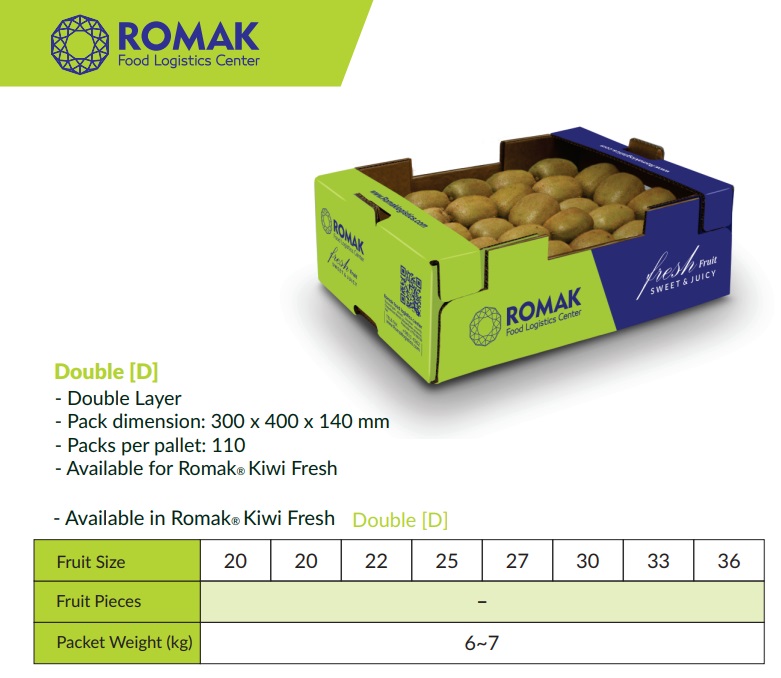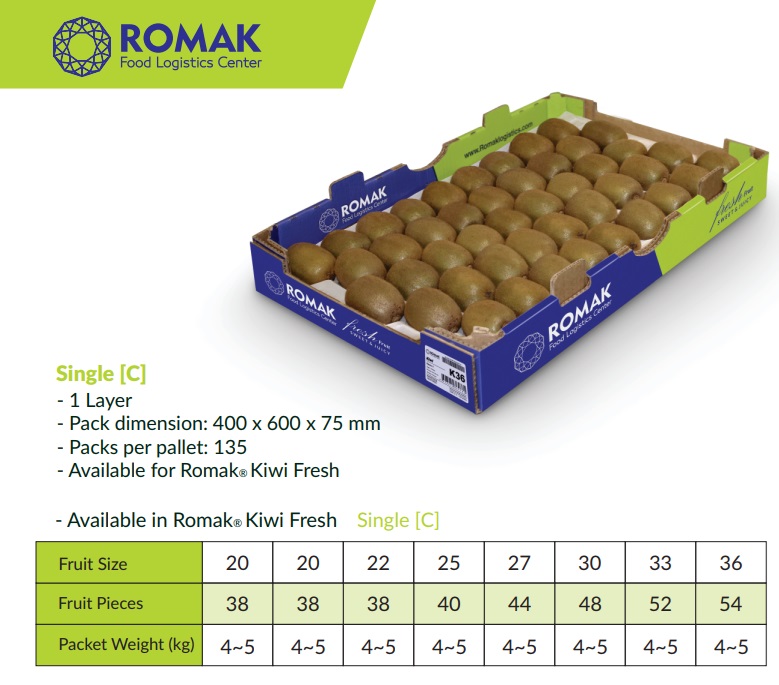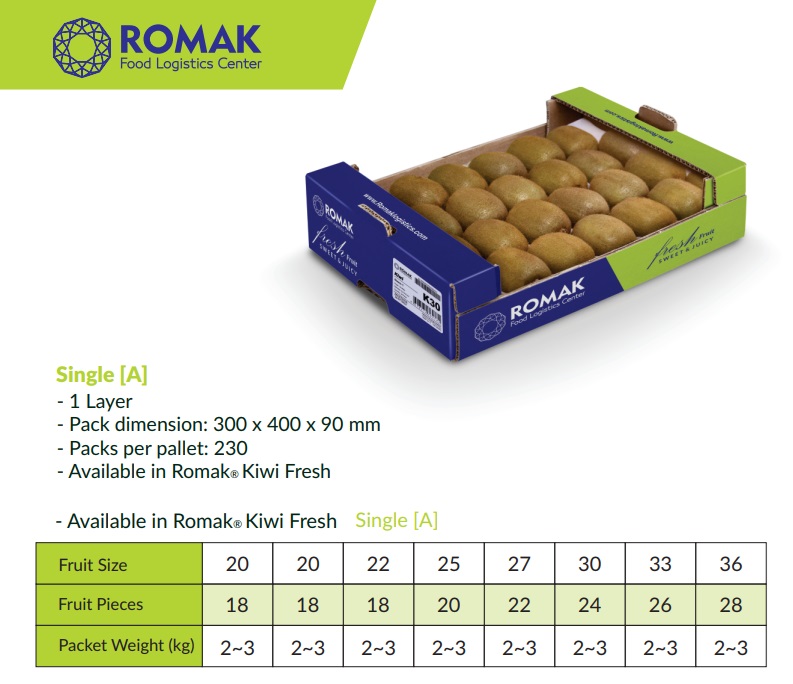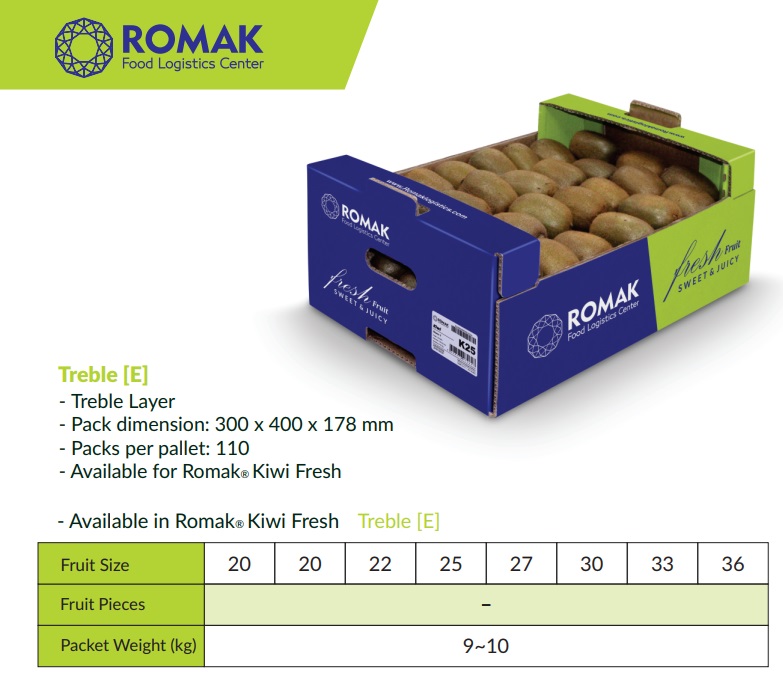General Product Description Orange:
It is one of the selected cultivars for the north of Iran. Compared to the Washington Navel orange, the Thomson Navel fruit is relatively small, conical, with a thin and smooth skin. Its skin color is paler than Washington Navel, the blades are fleshy but more juicy than Washington Navel, fragrant and flavorful, seedless and resistant to Cold arrives 15-20 days earlier than Washington Navel.

- The skin of the fruit is orange, slightly rough, and the fruit, depending on the variety of sweet and sour, yellow or red, and is rich in vitamin C.
- Citrus should be picked without tail
- By keeping in the refrigerator with controlled air, the storage time of Citrus is longer.
Calibers and weight:
Calibers and weight of Oranges variety, offered by ROMAK/HARA.
| Sizes(dia) | Less ~55~ 65 ~ 75 ~ 85 ~ 95 ~ 100 ~ More |
| Average weight(g) | Navel & Navelina 130 ~ 450 , Valencia 90 ~ 200 |
Size Count per 1 kg:
|
Jumbo |
4 |
Citrus(Navel/Navelian/Valencia) |
|
Standard |
8 |
Citrus(Navel/Navelian/Valencia) |
|
Small |
12 |
Citrus(Navel/Navelian/Valencia) |
Organoleptic Requirements:
|
Criteria |
Statement |
|
Appearance |
It is relatively large and spherical to slightly oval or oval. Its tree is evergreen and full of leaves and its height is up to 10 meters. |
|
Color |
The ripe fruit is orange .As per color table on this specification sheet. |
|
Smell |
Typical Citrus aroma without any foreign smell or off – odor |
|
Taste |
It has a crisp, watery and tasty texture.Typical Citrus taste without any foreign taste |
|
Consistency |
Frim,not sticky,free-flowing |
Optimal Storage Conditions:
During storage in the cold storage for timely identification of possible waste and knowledge of the fruit should be arranged so that it is sampled and the samples must be placed exactly.
- Maintenance without refrigeration: High quality fresh fruits can be stored immediately after harvest at the production site in well-ventilated buildings at a temperature between 10 and 15 degrees Celsius.
- Maintenance with refrigeration: Suitable temperature for storing orange fruit is between 4 and 10 degrees Celsius. Cold storage can be done with or without a headache.
- Pre-cool citrus except grapefruit. It is useful to keep the fruit for a long time before use and it should bring your fruit to the desired temperature for more than 3 to 4 days. The following conditions must be used before cooling fruits:
- The pre-cooling temperature should be the same as fruit storage.
- Air circulation rate is between 100 to 200 meters per second.
- Relative humidity should be measured at the highest (close to 90% and above).
- Maintenance with refrigeration for short, medium and long term
- Temperature: Storage temperature of several factors can cause different terms of fruits and fruit cultivars, production area, physiological conditions, to be measured, the shelf life is predicted. For some other varieties there is no such thing as if the storage of those dried fruit juices starts, however if the short-term storage is in your opinion, you can limit it, if you change its size, it is dangerous Reduce fungi.For example, grapefruit may be stored at 10 to 15 degrees Celsius for 4 to 6 weeks and for late ripening grapefruit at 5 to 6 degrees Celsius for 4 to 6 weeks.
- Relative humidity should be maintained between 85 and 90 throughout the storage period.
- Air circulation: Air circulation between 25 and 50 meters per second must be maintained during storage.
- Refreshing the air: Air freshening should be done at a rate of between one or two times per hour depending on the storage temperature to prevent the accumulation of carbon dioxide (more than 1%).


